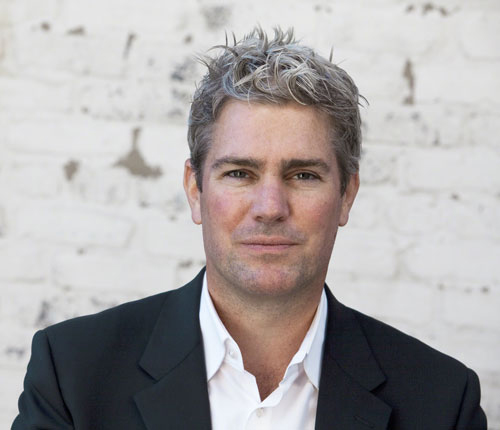Alumni Q+A: John Ronan MArch ’91
John Ronan MArch ’91 is an architect and educator living and working in Chicago. He lives with his wife and two daughters in a Mies van der Rohe building, “We have an apartment that faces the lake, and the view is like a Rothko painting which changes every day.”
After stints at Tigerman McCurry, Lohan Associates and Krueck & Sexton, Ronan formed John Ronan Architects in 1997, which has since grown to a staff of 14. The firm recently won the 2012 AIA National Honor Award for Architecture for its work on the Poetry Foundation headquarters in Chicago. Other award-winning projects designed by the firm include: Gary Comer College Prep School in Chicago, Yale Steam Laundry Condominiums project in Washington, D.C., and Akiba-Schechter Jewish Day School in Chicago. In addition to managing his successful practice, Ronan is a full professor at the Illinois Institute of Technology where he teaches design.
This summer, we spoke with Ronan and asked him a series of questions about his work, his life and his GSD experience.
Where were you born?
Grand Rapids, MI.
How many places have you lived?
Three – Grand Rapids, Cambridge and Chicago.
What’s your favorite place?
Montana. I don’t look at my phone when I’m there.
Where will you retire?
I can’t afford to retire.
What’s your favorite movie?… book?… fairy tale?
Dead Man by Jim Jarmusch, Remains of the Day by Ishiguro, the one where the architect calls all the shots.
How do you spend your summers?
Away from the city – in Michigan and Montana. We just returned from a week in Donegal, a remote and rugged area on the northwest coast of Ireland.
What do you do for exercise?
Swimming.
When did you realize you would be a designer?
From my earliest memory, I played with a Lego-like toy called American Bricks, and I would draw all the time, including during class at school; later, I would draw house plans during class. When I was about 10, I had a friend who lived next door to a modern house—a low (one-story) structure with a blank brick wall stretching across it that concealed an entry courtyard and prevented you from seeing into the house. It was very mysterious and it fascinated me. I never got inside, but that house sealed the deal for me, career-wise.
What object(s) most inspires you? Why?
Anonymous everyday objects that have grown interesting through use over time. Because they are not self-conscious in their design—they don’t refer back to the author. They embody a sad beauty that is real and true and cannot be designed.
Who inspires you in your work?
John Coltrane. He managed to take his art form to a higher level, giving it a transcendent, spiritual quality.
Is there a firm or individual that you wish you could have worked for?
The guy who designed Le Thoronet Abbey in France.
Is there someone you hope to work for still?
God no.
What is your biggest professional accomplishment?
I guess I would say the Poetry Foundation building, because it advances ideas about spatial layering and atmosphere that I have been working on for some time. The building has an abstract yet sensuous quality, and is formally simple, but spatially complex. As a driver of a cab I was in recently said, “It’s simple. But it’s complex.”
How does teaching impact your work?
I teach design studio and a seminar on the topic of materiality (at Illinois Institute of Technology) that explores different approaches, ideas and philosophies involving matter, and the physical aspects of architecture. This helps me to clarify my thinking about these issues in my own work.
What GSD faculty, critic or fellow student had the greatest influence?
Robin Evans for his unconventional lines of inquiry and his intellectual rigor, and Kevin Kieran for his generous spirit and his interest in tectonic culture.
What’s your favorite memory of the GSD?
Massimo Scolari was running first year (of the Master in Arch program), and he handed out a project that was about a country house, after which some naïve, but enthusiastic students crowded around him for further direction. One of the students asked him, “How should we start this project? Should we go out into the country this weekend and live in a tent?” to which Scolari replied (while waving his cigarette in the air and shrugging), “Some people need to make love on top of skyscrapers, with people shooting at them, to get excited . . . .” To this day, that memory cracks me up.

